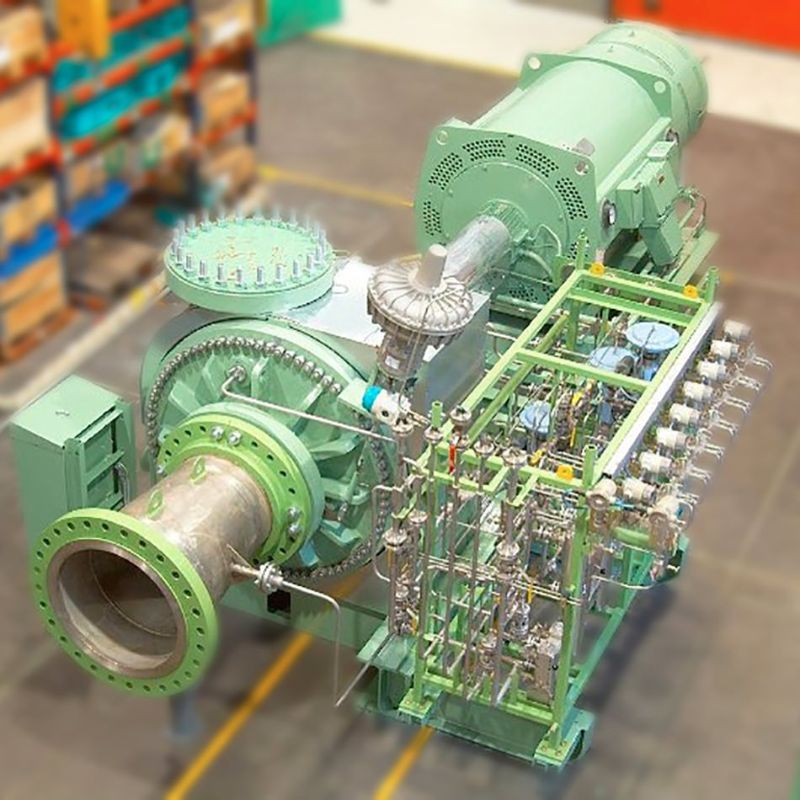Aug-2022
Electric process heating and a call for standard specifications
As electric process heater technology grows to enhance decarbonisation efforts in all industries, a standard specification is required.
Craig Tiras
Vulcanic EML
Viewed : 3534
Article Summary
Electric process heaters (EPHs) are commonly built by Vulcanic EML for the oil and gas industry. Multiple applications exist across different process industries, including chemicals, renewable energy storage systems, and carbon capture projects.
EPHs provide the most efficient route to decarbonise manufacturing processes or convert renewable electrical energy. For example, thermal energy can be used to generate steam, which, in turn, can be used to drive turbines and provide a consistent renewable power source.
The proven technology behind EPHs ensures the transition towards complete electrification can be implemented within existing manufacturing processes. The advantages of EPHs include ease of operation, no emissions, nearly 100% efficiency, smaller footprint, lower capital cost, higher outlet temperature, and remote heating.
The first EPH (shown in red in Figure 1) was manufactured by General Electric around 1960 to maintain temperature on top of a distillation column in the UOP Platforming process, which converts naphtha into high octane gasoline. This singular specification became the refinery standard for many years. Since then, hundreds of EPH specifications have been written, each with its own design considerations. This article reviews the process, mechanical, and electrical aspects of EPHs.
Heater bundle
The heart of an EPH is the heater bundle, typically made up of multiple hairpin heater elements ranging from one to several electrical circuits for proper power distribution to the heater bundle. The hairpin elements are welded into a 'tube sheet', and a UL/CSA (Underwriters Laboratory/Canadian Standards Association) housing protects the electrical connections. Temperature monitoring of one or several hairpin elements is typically done with a resistance temperature detector (RTD) sensor. Other arrangements exist, such as duct heaters, indirect heaters, and various special designs. For example, an air or gas heater installed within a process duct in low-pressure high-flow applications could also be considered an EPH.
The heater bundle can be contained in a fitted pressure vessel for maximum fluid velocity across the elements, or inserted into a tank to keep the process warm or to vaporise liquids. Sizes range from a few kilowatts to a few megawatts. Most engineers are familiar with shell-and-tube exchangers, but the heat transfer of an EPH is different. A heat exchanger’s maximum temperature is determined by the hot inlet fluid temperature, whereas the maximum temperature of an EPH is determined by the heat transfer coefficient.
EPH applications also can be used for high-temperature heating as the heater elements can easily operate above 1200°F/650°C, and higher, for gas applications. At bundle temperatures over 1000°F/540°C, the internal wall of the pressure vessel will rise above the process gas temperature and essentially double the heat transfer area. There are also similarities, such as higher pressure drop gives better heat transfer.
A good viewpoint of EPH heat transfer is that the process cools the heater elements, so higher flow allows for higher watt density. Optimising the EPH bundle into smaller diameter and using full silicon-controlled rectifier (SCR) control allows for higher heat flux. However, if on/off control is used, the bundle temperature will increase with a decrease in flow. The advantage of full SCR control is that the sheath temperature of the EPH will drop with less power applied (see Figure 3).
Three basic EPH calculations determine power, film temperature, and pressure drop:
- Power is a function of mass flow, specific heat, and delta temperature
- Sheath temperature is a function of four physical properties (density, specific heat, thermal conductivity, and viscosity), the Reynolds number, and the heat flux (watt density)
- Pressure drop is a function of density, velocity, pressure vessel, and heater bundle geometry.
In the 1990s, the largest EPHs were 100s of kilowatts (KW), while by the 2000s, the largest EPHs had increased to 1000s of KW, and now we are seeing 10s of megawatts per EPH. These sizes are required for decarbonisation processes, such as keeping molten salt from freezing on solar energy plants, storing power with heat and replacing fired heating applications. This article considers the mechanical, process, and electrical design of an EPH to successfully advance the technology into higher power considerations.
Mechanical design considerations
An AMSE (American Society of Mechanical Engineers) code stamp is a formal requirement for all EPHs with a volume greater than 1.5 ft3. In practice, specifications also require EPHs with a lower volume to be code stamped.
ASME Section VIII, Div. 1 code typically requires a heater flange to be three times thicker than when using ANSI (American National Standards Institute) flanges, which have shown to be sufficient with no flange deformation reported in over 60 years. Indeed, ASME Section VIII, Div. 2 calculations show that ANSI ratings are sufficient while the Div 1 calculations are too conservative.
For high gas temperature applications, the vessel shell can reach higher temperatures than the design temperature of the whole vessel due to heat radiation from the heater bundle. This has led to higher-rated ANSI flanges, even though the flanges do not reach this temperature. Ideally, the ASME should be dual rated with the shell designed for a higher temperature than the design temperature for the rest of the vessel.
The first EPH specification required welding the wet side of the heater flange, which has no benefit and is higher cost. Welding the dry side is effective in all applications. Once the bundle has been welded, the welds must be hydro-tested. If one of the elements in the centre of the bundle leaks, all of the outer elements must be removed to fix the inner element weld. With a dry side weld, any element can be replaced without removing other elements.
Some specifications require seamless tubing or tubing thicker than 0.035” (0.98mm). Unless the process is highly corrosive, such as for heating tail gas or ionised water, these specifications add unnecessary expense.
Even though the use of copper, steel, and stainless steel is less expensive, standardising on the Incoloy 800 series balances durability with cost effectiveness and availability. Higher alloys such as Inconel and Hastelloy are recommended for highly corrosive applications.
For EPHs of 480 volt or higher, it is essential to keep the compressed magnesium oxide (MgO) free from moisture. MgO is a hygroscopic substance with high heat transfer and high dielectric strength when dry, whereas wet MgO loses its dielectric strength. Hermetic seals on the end of the heater element are required to keep the MgO inside the heater elements free from moisture. Today's hermetic seals are done using proprietary methods for each manufacturer. However, unless it is specified, it may not be included.
For hot applications, a stand-off electrical terminal housing is required to keep the wires and seals inside cool. The elements can be welded inside the terminal housing on the dry or wet side of the flange. There are advantages and disadvantages to both methods. Every aspect of electric process heating has fine details that have been resolved over time, such as Double clamping the over-temperature sensor to the heater element. This facilitates field replacement if needed. This article is meant to discuss broader EPH topics.
Categories:
Add your rating:
Current Rating: 5
















